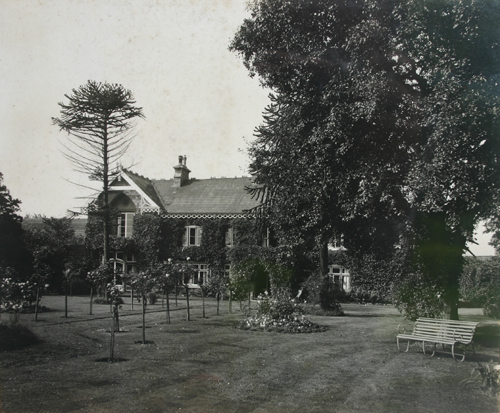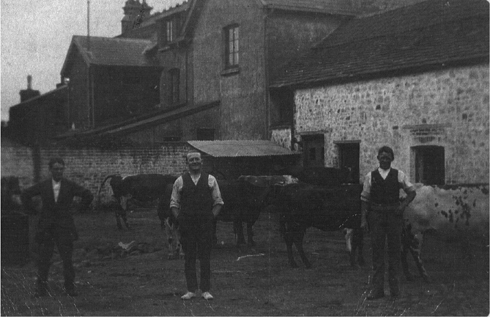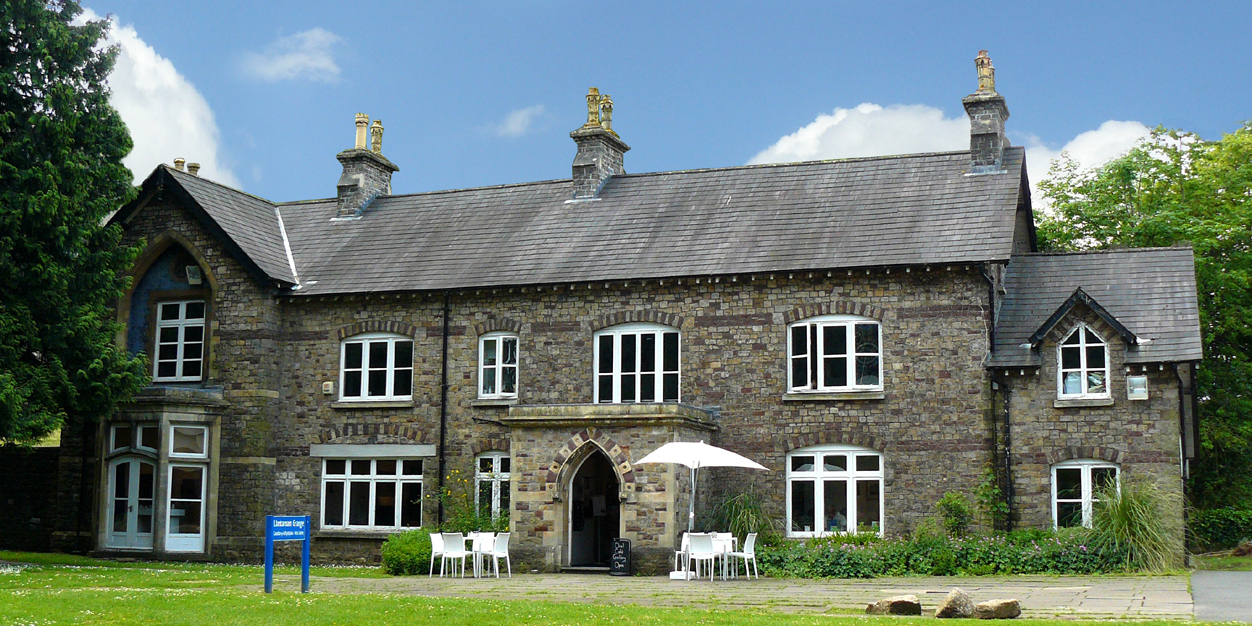History
Llantarnam Grange celebrated 50 years as an Art Centre on 30th April 2016. However the foundations of the house date back to around the 12th century, when a farmhouse stood on the site, called Gelli Las which means Green Grove. For the majority of this time, the history of Gelli Las is intertwined with that of Llantarnam Abbey. The Abbey at Llantarnam was founded by Cistercian monks in 1179. The Cistercians took over huge tracts of land, clearing forests and setting up monastic farms called granges. Llantarnam Abbey is believed to have had around fourteen of these granges, one being Gelli Las.

After the dissolution of the monasteries in the 1530’s, the Abbey was taken over as a private house by William Morgan and rebuilt using many of the original stones. He also owned all the attached estates, including Gelli Las which appears in the survey of the manor in 1634. The estate passed down through the Morgan family, and in 1707 Sir Edward Morgan’s daughters, Anne and Frances agreed to a partition of the estates. By the 1830’s another descendant, Reginald James Blewitt was in residence and he virtually rebuilt the Abbey in 1837. It was sold to Sir Clifford Cory in 1895 who lived there until his death in 1941. In 1946 the abbey became the home for the Sisters of Saint Joseph as it still is today.
It isn’t known when Gelli Las was sold off from the rest of the abbey estates; it could have been when the estates were partitioned in 1707. However we do know from the Apportment of the Rent-Charge in lieu of Tithes in 1844, Gelli Las was then owned by John Lawrence. It is referred to as being ”one hundred and fifty acres, tithe free by prescription and very well known.”
John Lawrence sold Gelli Las to Henry Crawshay in 1862, who in turn sold it to Alfred Colerick Pilliner in 1871. Pilliner is noted to have been a Justice of the Peace and one of the principal landowners in the district. The Holy Trinity Church in Pontnewydd, Cwmbran was said to have an oak screen dedicated to the memory of Mrs. Pilliner of Llantarnam Grange.

Sometime during the 19th century Gelli Las was converted from a farmhouse into a gentleman’s residence, probably by A.C. Pilliner as his initials can be found on a plaque above the bay windows. He was probably also responsible for changing the name to Llantarnam Grange - a title perhaps more in keeping with his grand new residence and referring to it’s former history. The property passed to Pilliner’s family on his death in 1887 and was sold in 1905. Little is known of its owners until 1914 when Mr. John Fox-Tallis was resident at the Grange and recorded as one of the principal residents in the area.
Around 1932 Llantarnam Grange was bought by William Thomas Jones, who was Managing Director of Avondale Tinplate Works. He and his wife, Margaret who had died in 1911, had four children - Thomas, Wilfred, Arthur and Jesse.

Thomas’s son Richard has told us how he remembers the house, for instance playing with model trains under the billiard table, skating on the pond when it was frozen and magic lantern shows in the cellars. The Grange had a large kitchen garden and orchard, which allowed them to be virtually self-sufficient during World War II. The gardens led right down to Grange Road (St David's Rd was not then built); there was a sunken lawn and a revolving summerhouse. At the rear of the house was a farmhouse and stables (occupied by a tenant farmer).
Their Lounge now houses our Craftshop; the Billiard Room, Dining Hall and Kitchen are now galleries while their Breakfast Room is now our Cafe. On the first floor, our Workshop Room formed the master bedroom, which was Richard’s grandfather's, with its large French windows onto the balcony. Our education storeroom was a dressing room, which Jesse used as a sewing room. Our Kiln room was the upstairs toilet; while our meeting rooms were once bedrooms with walk-in wardrobes. On the second floor there were four servant’s rooms which we now use as offices and for storage.
William Jones died in 1951 and Llantarnam Grange passed to his four children. Arthur and Jesse, who were both unmarried, remained at the house until it was put up for sale in 1952.
At an auction on 21st October 1952 Llantarnam Grange was bought by Cwmbran Development Corporation for £3,900, a body formed following the New Towns Act in 1946, which was passed to create New Towns all over Britain. In 1953 the building was let to the General Post Office who used it as a sorting office. Cwmbran was just a small village at that time and more space was needed to deal with the anticipated extra demand following the building of the New Town and its houses.
Work on the Cwmbran Town Centre began in 1956. The Bus Station was built on top of the Kitchen Garden, a car park built over the orchard (now the site of the Vue Cinema) and Glyndwr Road now runs straight through the area where the stables were. Lucas Girlings took over the lease in 1958, using it as a drawing office. After several years of arguing Girlings were finally forced to leave in 1964 to enable the building to be demolished to make way for a park in the town centre.
At the last minute the General Manager of the Development Corporation suggested that Llantarnam Grange’s position made it the perfect venue for a meeting place for small societies and clubs - something that was seen as vital to the social and cultural growth of the New Town. Renovation of the building cost nearly £12,000 and on 30th April 1966 Llantarnam Grange Societies Club was officially opened with an exhibition of work by John Wright and Tom Rathmell. A trust was set up to administrate the club and the local theatre, art and camera clubs met there as well as hiring it out for art exhibitions and social functions.
In 1983, with the demise of the Development Corporation, the trustees of Llantarnam Grange took over the running of the centre. The Trustees were William George Thomas, Evelyn Gertrude Brearley, William Henry James Harris, Richard Hanbury Tenison, Mathew Caradoc and Thomas Prichard. The centre has since progressed from a meeting place and small gallery into a nationally renowned Arts Centre with galleries, a craft shop and education department. A grant was received in 1995 to replace the roof and in 1998 we received a desperately needed grant of nearly a quarter of a million pounds from The Arts Council of Wales Lottery Unit and the Foundation of Sport and the Arts to completely refurbish the building.
Since then the centre has gone from strength to strength with the quality of its exhibitions programme nationally recognised and the high standard of its education programme acknowledged by the Curriculum Council for Wales.
As a registered charity we provide an extensive education programme for schools and for young people during school holidays. We also run some adult courses and work with community groups such as the Alzheimers Society to provide art and craft activities. We also rent our meeting rooms.
For a number of years Llantarnam Grange Arts Centre has been a revenue funded client of the Arts Council of Wales . We also receive annual funding from Torfaen County Borough Council, Monmouthshire County Council and local Community Councils.






